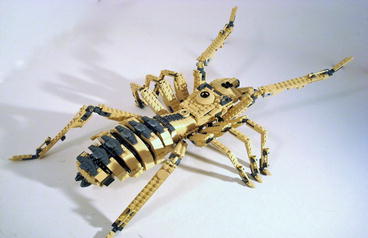1. Introduction
Introduction
The universe consists of matter and energy as depicted in Fig. ]. Most CAD tools use the numerical Finite Element Method (FEM ) approximation to accurately discretize in space, model and simulate these continuous structure-level VLSI systems. Solving linear ODEs results in matrix form system that can be solved using direct method such as Gaussian elimination method or indirect method (iterative methods) such as Jacobi method, and solving nonlinear ODEs can be done by Newtons method. These methods are useful for moderately sized problems.
Fig. 1.1
The universe: the big picture or the high-level overview
But, solving high order (system complexity is referred to as the order of the system) or high degree of freedom of these discretized differential equations is a time-consuming process. Model order reduction (MOR ) technique is a compression method to reduce the order of the full-order ODEs for fast computations and less storage requirements and at the same time it keeps the same characteristics of the full system and it should be passivity-guaranteed and stability-guaranteed model [.
Fig. 1.2
Typical mathematical modeling flow for complex physical systems: the big picture. MOR is needed for large size problems, given an ODE of order n , find another ODE of order r , where r << n with essentially the same properties and stability, passivity are preserved. y ( t ) is the output, u ( t ) is the input, x ( t ) the state. We replace the set of ODEs by a smaller set of ODEs without sacrificing the accuracy of the system behavior. The universe is continuous, but computers are discrete. A computer does not understand Physics/Math equations, so we need to discretize/ sample them to be able to program them
Fig. 1.3
MOR iterative method. The full-order model and the reduced model are input to a Conformance Criteria Checking step that guarantees a conformance of their characteristics
MOR approximates the original system with an appropriately simplified system which captures the main properties of the original one. For example, the lego-based spider shown in Fig. approximates the real spider, as it can be built in less time and acceptable accuracy.
Fig. 1.4
LEGO-based spider as an example for MOR approximation
In electromagnetic systems, is used to reduce and approximate the transfer function for single input single output (SISO ) and multiple input multiple output (MIMO ) systems.
The first contribution in model order reduction was published in [] is another fundamental method in MOR.
The MOR techniques are falling under four main categories as illustrated in Fig. , frequency-domain, time-domain, frequency-time domain, and optimization techniques . Frequency-domain category contains Eigen-mode analysis, moment matching, and singular value decomposition (SVD) .
Eigen-mode analysis MOR has three forms: Pole-Residue Form, Pole-Zero Form, and Rational form, it is simple but computationally inefficient. Moment-matching MOR is done by matching the Taylor series coefficients (Asymptotic waveform evaluation (AWE ) moment matching), but this method had a low accuracy. So, Pad approximations moment matching were later used to improve the accuracy, but due to the ill-conditioning of the matrices involved the approximate transfer function response was found to be narrow band, leading to inaccuracies at higher orders ODEs .
Later, Krylov subspace -scheme moment matching is used to improve the ill-conditioning, it projects the problem onto a lower/smaller dimensional subspace that captures the vital aspects of the system behavior [].
As stated earlier, MOR can be done either in frequency domain or in time domain. Frequency domain techniques such as AWE and Krylov subspace -based methods try to get a reduced order system by approximating a certain number of moments of the original system transfer function. But, the accuracy of the output response of this reduced system in time domain cannot always be guaranteed even if the reduced transfer function can be accurate in frequency domain. So, sometime time domain MOR is used such as Chebyshev [].
Recently, wavelet-based approach is proposed for the model order reduction of linear circuits in time-frequency domain. Compared with Chebyshev reduction method, the wavelet reduction approach can achieve smaller reduced order circuits with very high accuracy [].
The optimization techniques contain: machine learning algorithms such as neural network [].
The comparison between these different MOR methods is shown in Table ], still not mature.
Table 1.1
The comparison between different MOR methods
Method | How it works | Advantage | Disadvantage |
|---|
Frequency-domain |
Eigen-mode analysis | For linear systems only Pole-Residue Form: Pole-Zero Form: Rational form (point-matching): b i represents the numerator coefficients, a i represents the denominator coefficients | Drop terms with small residues Drop terms with large poles Find a low-order rational function matching Take the part of the transfer function with the poles that are the closest to the imaginary axis and to throw away the others | Simple physical interpretation | Computationally inefficient |
Moment-matching category | AWE (implicit) With respect to s 0 = 0 = m 0 + m 1 s + m 2 s 2 + | Taylor Expansion | Simple and Computationally efficient Well conditioned |





















